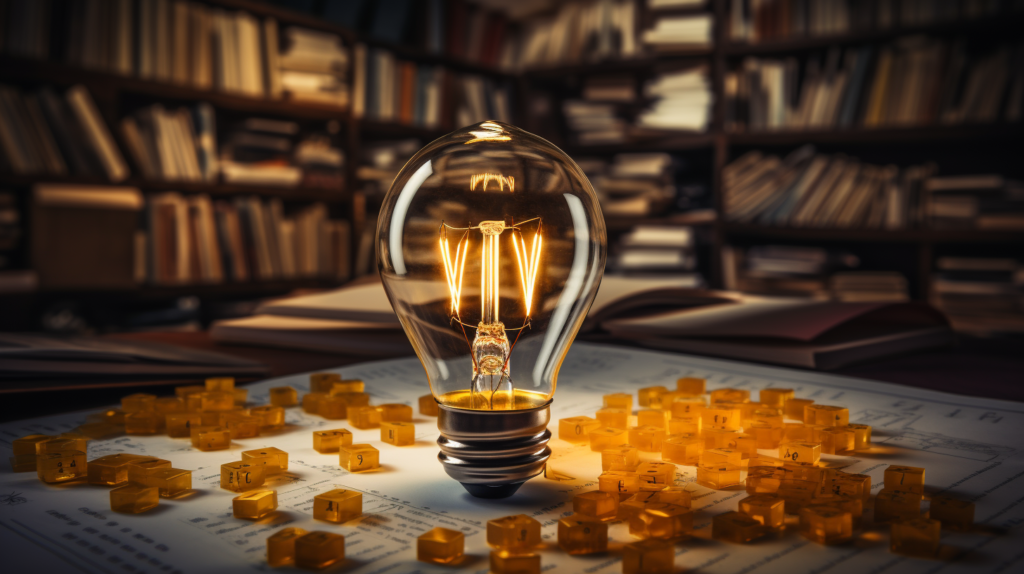How Long Do LED Bulbs Last? Lifespan Explained July 6, 2023 – Posted in: Lighting Information, General Info

LED light bulbs and fixtures have become extremely popular as a lighting option due to their many advantages. Unlike old school bulbs, which have a relatively short lifespan, LEDs can last for many years to come. In this piece, we will cover the factors affecting LED lights average lifespan, how to extend it, and how they compare to older lighting tech.
Table of Contents – How Long Do LED Light Bulbs Last
How long is the lifespan of LED’s?
In reality, LED’s typically last between 20,000 to 60,000 hours depending on the type and quality. The lifespan or L70 of LED lights can vary depending on several factors. One of the main factors is the quality of the light itself. High-quality LED’s are designed to last much longer and provide a more consistent level of light throughout their lifetime.
Light Lifetime Comparison Table
| Type | Average (Hours) | Rated (Hours) |
| Incandescent | 750-2,000 | 1,000-1,500 |
| Halogen | 2,000-4,000 | 2,000-3,000 |
| CFL | 8,000-15,000 | 10,000-12,000 |
| LED | 40,000-50,000 | 50,000-60,000 |
Do LED’s really last as long as they say?
Not exactly. LED lights are known for their longevity, but it is important to understand the concept of rated life. The rated life of an LED bulb refers to the number of operating hours at which the bulb will still emit at least 70% of its initial lumen output (also known as L70 rating). This is when people tend to notice that the light has dimmed out over the years.

What is an L70 Rating?
The LED industry has introduced a fresh measurement for the longevity of LEDs, known as L70 or Lumen maintenance. This measurement represents the approximate time it would take for the LED to diminish its original light output by 30%.
This percentage was favored because research indicates that most users fail to notice the slow loss of light until well after it passes the 70% mark.
Digital Lumens
During the life of a light, the decrease in brightness by 30% isn’t easily noticed. However, once it dims beyond that threshold, we can see the difference even over extended periods of time. This particular moment is considered as the end of life for LEDs, rather than just when the chip itself stops working.

Factors affecting LED life expectancy
One of the main factors is the ambient operating temperature. LED light sources generate much less heat compared to traditional light sources, but excessive heat can still reduce their lifespan. Proper ventilation and heat dissipation is necessary to get the most out of your lights.
Another factor is the quality of the LED chip itself. The LED circuit is responsible for regulating the current and voltage supplied to the LED. A high-quality circuit can help ensure stable operation and prolong the lifespan of the LED itself.
Extending the lifetime of LEDs
There are several steps you can take to extend the lifespan of your LED fixtures:
- Properly install LED bulbs: Make sure the bulbs are securely installed in compatible fixtures and avoid over-tightening.
- Maintain a cool environment: LED’s lifetime is significantly reduced in higher temperatures. To get the most out of your lights, try to keep them in a well ventilated area.
- Keep the lights clean: Dust and dirt will accumulate on the surface of the lights if not cleaned, reducing their efficiency. Try clean the lights with a soft cloth or duster on a regular basis.
- Use high quality LED Drivers: For light fixtures, make sure they have reputable LED drivers such as ones from Osram and Meanwell. Cheap drivers can be over-supplying voltage or even burn out on you much earlier than your LED’s.
- Choose reputable brands: Look for brands that offer reliable and durable chips and LED drivers. For fixtures, try to keep an eye on the manufacturers warranty.
- Avoid overdriving: Overdriving LED’s by providing more current than the recommended level can reduce their lifespan. Make sure to follow the manufacturer’s specifications.
- Use dimmers wisely: If you are using dimmers with LED type lights, make sure they are compatible with the bulbs or fixtures.
- Avoid frequently turning lights on and off: While more resilient, like all lights, the added stress of constantly flipping the light switch does reduce the durability of electrical components used in fixtures and bulbs.

If your LED light stops working too soon, make sure to look into the warranty or guarantee from the manufacturer.
Depending on the item, an LED light could come with a warranty or guarantee from the maker that ensures it will last for a specific period. Normally, these warranties typically range anywhere from three to five years, so if a bulb burns out within that time, it’s considered a normal failure.
These warranties can be somewhat useful, but they usually only cover the cost of replacing the particular LED light. So, going through all the necessary steps to make a warranty claim for a single bulb failure might not be worth your time.
If you do decide to make a warranty claim, be prepared to ship the item back to the maker. They will test it to check if you followed their instructions for usage. After testing, they will provide you with the results, indicating whether they will replace or reimburse the LED. However, if the failure was due to user error or improper installation, you might not be so lucky.

Frequently Asked Questions
How does the life cycle of an LED compare to incandescent and halogen light bulbs?
LED’s have a significantly longer lifespan compared to traditional light bulbs. While incandescent bulbs typically last for around 1,000 hours and halogen bulbs for around 2,000 hours, LED’s can last for tens of thousands of hours.
How does the light output of LEDs last over time?
LED lights age over time and progressively get dimmer until they stop working altogether, a process known as “lumen degradation” or “LED degradation”.
Unlike traditional bulbs, LEDs do not contain a filament and instead illuminate using a semiconductor. This means that they do not instantly burn out like traditional bulbs, but rather wear out over time.
The rate at which an LED loses brightness depends on the operating conditions and external factors such as temperature, relative humidity, and changes in the thermal load. LEDs still emit light at the end of their life, just not enough, and the usual loss of luminosity is around 30% .
Is LED lighting technology the best option for longevity?
Yes, LED lighting technology is known for its longevity. LEDs are designed to last significantly longer than traditional light bulbs, making them a cost-effective and environmentally friendly lighting option.
LEDs are specifically created to have a much longer lifespan compared to conventional light bulbs, resulting in a lighting choice that is both economical and beneficial for the environment.
What is the role of a heat sink in an LED?
A heat sink is an important component for LED‘s as it helps dissipate heat generated, which can ultimately help extend its lifespan.
How do LEDs actually last longer compared to other types of light bulbs?
LEDs are different from traditional bulbs as they do not use a filament that can burn out. Instead, they use a solid-state lighting technology that is more durable and less prone to failure.
I have been the project manager for Modern.Place since early 2016, spending three of those years working overseas on the manufacturing & procurement side of the LED lighting industry. Constantly learning and passing on knowledge to others while excited for what the lighting industry will involve into next.

